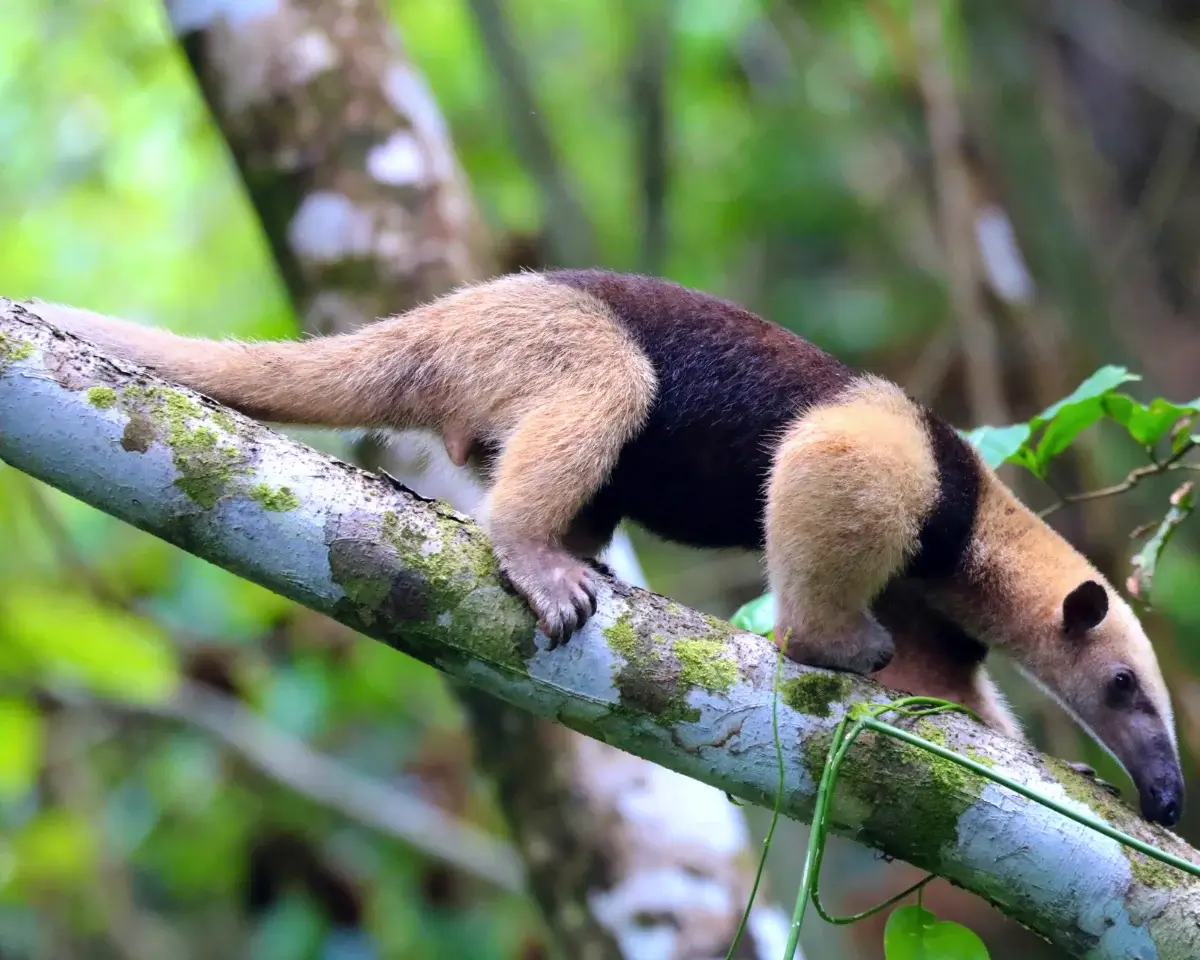Baird’s Tapir (Tapirus bairdii) is a species of tapir that is native to Central America and northern South America. It is one of three Latin American species of tapir.
It is a large browsing mammal, roughly pig-like in shape, with a short, prehensile snout. Tapirs inhabit jungle and forest regions of South America, Central America, and Southeast Asia and in Costa Rica can be found in the tropical rainforest of Corcovado National Park, often times near the river banks and ocean shores. . There are four species of Tapirs, being the Brazilian tapir, the Malayan tapir, Baird’s tapir and the mountain tapir. All four species of tapir are classified as endangered or vulnerable. Their closest relatives are the other odd-toed ungulates, including horses and rhinoceroses.
The Baird’s Tapir has a distinctive cream-colored marking on its face and throat and a dark spot on each cheek, behind and below the eye. The rest of its hair is dark brown or grayish-brown. The animal is the largest of the three American species and, in fact, the largest land mammal found in the wild from Mexico to South America. Baird’s Tapirs usually grow to 2 metres (6.6 ft) in length and 1.2 metres (3.9 ft) in height, and adults weigh 240–400 kilograms (530–880 lb). Like the other species of tapir, they have small stubby tails and long, flexible proboscises. They have four toes on each front foot and three toes on each back foot.
The gestation period is approximately 400 days, after which one offspring is born (multiple births are extremely rare). The babies, as with all species of tapir, have reddish-brown hair with white spots and stripes, a camouflage which affords them excellent protection in the dappled light of the forest. This pattern eventually fades into the adult coloration. For the first week of their lives, infant Baird’s Tapirs are hidden in secluded locations while their mothers forage for food and return periodically to nurse them, but after this time, the young follow their mothers on feeding expeditions. At three weeks of age, the young are able to swim. Weaning occurs after one year, and sexual maturity is usually reached six to twelve months later. Baird’s Tapirs can live for over thirty years.




